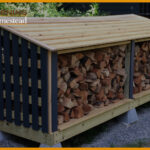Last Updated on June 8, 2023 by Georgie Smith
When it comes to thick, healthy, lush, and green lawn, nothing beats grass sod for instant gratification. Sure, grass sod is a tad expensive, but lay it right, and in a couple of weeks, you have a dense, well-established lawn that is naturally resistant to weed, pet’s infestations, and diseases.
For the best grass sod results, however, you need to find the best sod farms near you to buy fresh sod harvested on delivery day for fast rooting and use. Ideally, you should buy this grass from sod farms near you to facilitate quick delivery and the best choices of sod for every purpose and climate.
If you are tired of looking at your lawn with disgust, lawn sod and grass sod is what you might need to give it an overhaul in appearance that is very different from what you see right now.
In this article, we shall explore the idea of how we can change the orientation of our lawns from bland spaces to well-manicured lawns within a couple of weeks using sod grass. We will also talk about this magic grass, where to find sod farms near you, how to lay it, and finally compare it with some alternative lawn options such as seed.
Read on to get a better understanding of how this process works and where you should start.
What is Sod Grass?
Convenience buys time, and beauty-those are some of the few words that can sum up this grass.
So, what is sod grass anyway?
Also referred to as turf grass, sod grass is the grass that grows for one reason, and that is to remove and plant elsewhere. The grass is available in layer form, with each layer consisting of a section of grass and soil held together by roots or other materials.
Sod lawn is gaining popularity, especially with golfers and property owners, and this is for good reasons. First, it is lusher and grows more evenly. Moreover, it is often longer and taller than other forms of grass as well.
With this lawn, you are basically “buying time.” That is because you are paying for a turf that someone else has coddled over a period of 14 to 18 months.
Similarly, the turf is all about convenience. This lawn installment can be in any season, spring through fall, and even in mild winter climates.
Moreover, for regions that support and favor cool-season grasses such as Kentucky bluegrass, perennial ryegrass, fine fescue, and tall fescue in the Northeast regions of the US, this lawn is resistant to sprouting a nice crop of weed when seeding a lawn in spring.
On the other hand, on the southern states which favor warm-season grasses such as Bermudagrass, centipedegrass, and zoysiagrass, the turf lawn is an ideal way of covering your backyard any time of the year, since the turf grows from seed.
How to Find Best Places to Buy Sod Near Me?
There are various ways in which you can use to find the best places to buy sod grass. One way is through word of mouth- recommendations and referrals from friends, relatives, and neighbors are one effective way of finding the grass-sod farms near you.
Another effective way of finding sod farms and businesses is through the internet. The internet allows you to search and find businesses all over the world.
Some of the platforms on the internet that support local sod farm searches within your locality include the social media platforms such as Facebook, Twitter, and Instagram.
Besides the social media platforms, there are some sites, dedicated to making local searches easier. Some of these sites include Yelp, Merchant Circle, and online directories.
Google Maps
Google Maps, a product of Google is perhaps the ultimate way of finding sod farms near you. If you are looking for local businesses within you to provide you with grass services, you can use this Google Link to find them.
You can refine your searches by typing your location plus the service you need at the top left corner of the map.
Accounts
Free Trial
Projects
SSL
Storage
Symphony Sod Grass
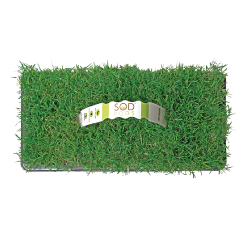
Brand - SOD PODS
Material Feature - Natural
Unit Count - 32.0 Count
Number of Pieces - 32
Easy to grow
Artificial Grass
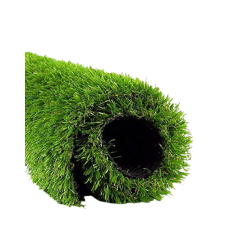
Material - Polyethylene
Brand - ALTRUISTIC
Size - 3.3ft X 5ft
Shape - Rectangular
Easy to clean
Zoysia Plug Tray
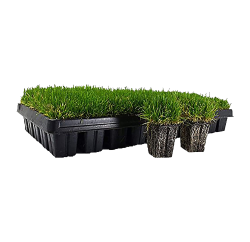
Brand - ZoysiaPlug.com
Drought Tolerant
Winter, Summer
Easy to remove
Easy to grow
Best Grass Sod for Sale on The Market:
Symphony Sod Grass/Turf
Symphony Sod provides clients with high-quality, fresh, and locally sourced turf grasses for aesthetic purposes. With more than 150 Symphony farms, the company boasts premium locally-grown products.
Regardless of your needs, Symphony offers a plethora of grass varieties ranging from Bermuda, Bluegrass, Centipede, Fescue, Perennial Ryegrass, St. Augustine to Zoysia.
Available in 500 SQ FT, Symphony’ will provide you with high-grade and premium products sure to wow your neighbors and family members.
Allow us to beautify your home by requesting Symphony Sod Grass/Turf today.
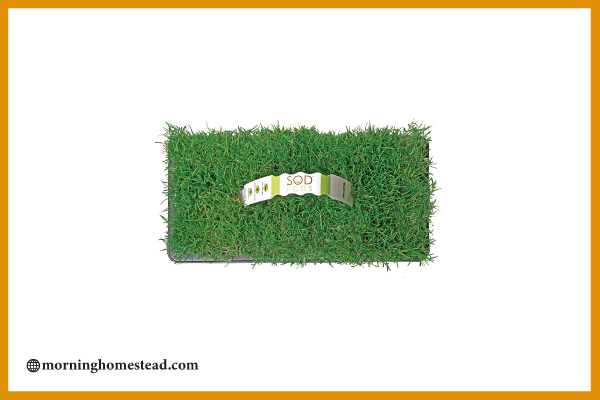
ALTRUISTIC Premium Realistic Artificial Grass
ALTRUISTIC is your best choice for artificial grass and a perfect substitute for natural sod. The high-quality synthetic material used to construct an ALTRUISTIC lawn has the appearance and texture of real grass.
The UV-resistant polyethylene and poly polypropylene yarn used in constructing the grass is of superior resilience, making the grass durable and robust. The grass is resistant to weather conditions such as sunlight, or hail.
The ALTRUISTIC artificial grass weighs only 70 oz, is incredibly dense, sports soft, non-abrasive, and has non-absorbent fibers, making the grass an ideal choice for both indoor and outdoor projects.
Without the need to mow, water or spray, the Premium Realistic Artificial Grass is a zero-maintenance product that will provide you with years of enjoyment with family, friends, and pets. With this grass, you will no longer have to worry about thinning drying, or dying of the grass.
What`s more? The product is an eco-friendly and non-toxic choice, making it ideal for use by children and pets, without causing any harm.
Get your ALTRUISTIC Artificial Grass today, and feel the goodness of lush, green, and healthy grass at competitive pricing.

Pet Garden Premium Artificial Grass Patch
You would confuse Pet Grass with real grass-sporting a beautiful and aesthetic realistic look; this synthetic product has a light and natural-looking fescue-like 4-tone color, blade, and grass texture that closely resemble the real grass.
Pet grass weighs 70 oz and is the real deal, when it comes to providing an extra-lush, feeling. With just the right density, the grass feels great under bare feet.
Just like the ALTRUISTIC artificial grass, this grass is lead-free and non-toxic, making it an ideal choice for pets, and kids.
Designed from high-grade UV-resistant polyethylene and polypropylene yarn, Pet Artificial Grass Patch is durable and long-lasting. This material construction can stand the extreme UV rays but also withstand your pet pee.
This Lead-Free Fake Grass for Dogs is a low-maintenance product. Besides not needing mowing, watering, or adding fertilizer, the grass comes with conveniently-placed holes for easy and optimal drainage.
Moreover, unlike other grasses which need to be stapled or nailed to the ground, this grass features rubber backing on the underside to keep it in place.
The Pet Zen Artificial Grass Patch for dogs and outdoor décor is the true definition of the perfect artificial grass. It packs plenty of valuable and handy features.
Orders yours today and join thousands of satisfied customers.
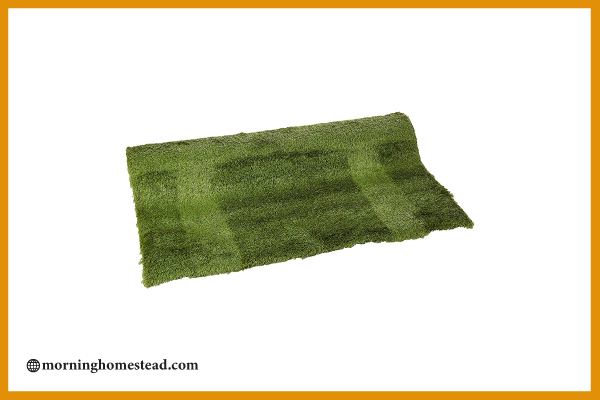
Zoysia Plug Tray / EZPlug
Zoysia is an excellent choice for all home lawns throughout the USA. The company produces high-quality grasses that can tolerate the most extreme cold and heat conditions, and the Zoysia Plug Tray is no different.
Aside from being an ideal option for those living in extreme weather conditions, this grass greens up early during spring and has better dollar spot disease resistance.
Available in 50 plugs grown in trays, the grass grows healthy and lush, without any stress because there is much less transplant shock. The root system of the grass remains intact. This plugging system allows the grass to start growing and spreading faster since it does not require time to recover from the transplant shock.
Additionally, since the Zoysia Grass Plugs are already producing runners and ready for planting, the grass grows into a beautiful low maintenance lawn within a short period.
The best part of purchasing this product is that the plugs grow in a rich compost soil mixture that slowly feeds the grass as it establishes itself in your yard.
Looking for a yard that is sure to raise eyebrows? Order Zoysia Plug Tray/EZPlug today.
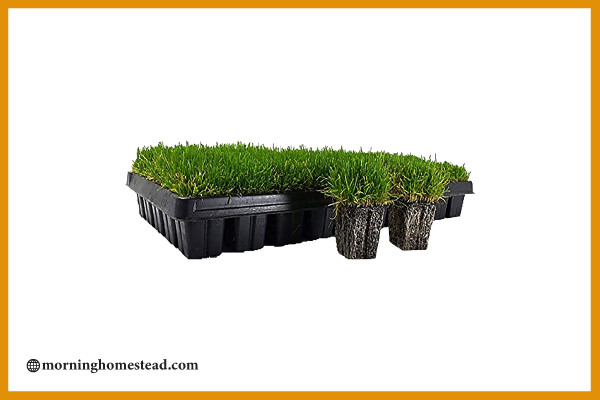
Fresh Patch Real Grass Training Sod
First introduced into the market on ABC`s “Shark Tank,” the Fresh Patch Grass is a real living grass growing on a hydroponic mat without the need for soil.
Just like regular grass does, this patch acts as a natural attractant to your dog, has a root system that absorbs urine and eliminates any odors, and can train dogs.
To use for indoor purposes, this mat is an excellent choice for indoor dogs and unvaccinated puppies who can`t leave the confines of your home. It`s also ideal for you when you do not feel like going out.
Measuring 24″ by 16″, it does not take up your space, it is incredibly light and ideal for dogs under 25lbs.
This patch also doubles as a litter box, just for cats. Moreover, if you need something larger than the standard piece, you can buy the Fresh Patch XL, which expands 3X larger than the smaller standard Fresh Patch.

How to Lay Sod to Start New Lawns
Often, sod gets a bad rap, but that is because of the mistakes that gardeners usually make when laying it down. Lay it correctly in good soil, and it will thrive to your expectation.
Below, we look at the correct way of laying your sod to start new lawns.
Evaluating your Starting Point
When faced with an existing lawn, it can be challenging to decide whether to work with what is there or start over, seed or lay the turf.
While laying turf grass is a premier alternative to seeding, there are instances when it is not ideal. In this section, we look at the most significant factor you need to consider if you are not sure whether to oversee your lawn or lay new turf.
Examine the Weeds
Before jumping into any decision, it is important that you carefully examine your lawn for weeds, undesirable grasses, and areas that look weak, or diseased.
As a rule of thumb, if less than 40 percent of weeds cover your lawn, then improving on what you have is a practical and economical option. Though it will take diligence to oversee and eliminate the weeds, you can still turn your marginal lawn around.
On the other hand, if more than 40-50 percent of weed covers your lawn and numerous patches of dead or struggling grass, it is best to have a complete overhaul and start from scratch.
pH of your Soil
Before laying the sod, it is important that you determine the pH of your soil. Ideally, turf grass likes a well-aerated base that is slightly acidic with a pH between 6.0 and 7.5 and nutrient-rich.
If you do not know how to test the pH of the soil, you can request your local extension service to test it for you but at a cost though. You will need to send a sample of your backyard soil for lab analysis.
Testing your soil is an integral part of any successful lawn project. The test results, which should come back within a week or two, should show recommendations and precisely show what amendments you should add and in what quantity.
The results will eliminate any guesswork and should provide you with a detailed look into the soil essentials such as soil pH, organic matter, and the potential availability of the necessary nutrients.
This information will provide you with a starting point, as well as offer you a platform on which you can base your decisions going forward. You can now fertilize and amend any soil deficits with confidence and improve its ability to support dense and healthy grass.
In the section below, we look at the step-by-step procedure of laying turf on your lawn. However, before then, let’s look at the materials you will need to get the job done.
- Tools: A hand trowel, rototiller, tape measure, spading fork, soil rake, garden hose, lawn edger, lawn roller, lawn sprinkler, and stiff push broom.
- Materials: Soil test kit, organic matter, sod, grass fertilizer
Prep the Ground for Laying:
Prepping the ground for laying sod is like any other landscaping project, it is just the final part of laying the turf is a tad different. However, how you prep the soil, when you prep and lay the sod, and the materials you need are the same.
The first step of preparing the soil is loosening it to a depth of 6 to 8 inches. You can use a rototiller to dig organic matter into the ground.
Remove any debris you unearth, including rocks and wood. Add 2 to 3 inches of finished compost or organic matter.
Organic matter is essential in;
- Improving soil aeration
- Improving water drainage
- Improving water retention
- Avoiding waterlogging problems,
- Enhancing microbial population in your soil.
For improved drainage, you can add 2 to 3 inches of sand to clay-like soil. Till in amendments.
Then based on the results of your soil test, you can use a spreader to add the proper starter fertilizer, and lime if needed.
Though it`s still okay to lay sod over an existing lawn, many landscapers prefer laying the garden over bare grass. If you have a lawn, you can remove it using the following three ways;
Using Chemicals
Though not environmentally friendly, you can spray glyphosate on your existing garden, and sod your lawn over the dead grass.
Using a Tiller or Bedscaper
The use of a tiller is only suitable for regions where rocks and roots are not an issue. Till the existing grass into the soil. While at it, add some compost and fertilizer, and mix it in.
Using a Shovel
If you are determined to remove the existing grass without the need of using chemicals or tillers, then a shovel is your best bet. Though tedious, it will get the job done.
Level the Surface
Level the ground by raking at the soil level. A rake will knock any high spots while filling in the low spots. Raking evens, the soil surface, while creating loose soil particles, which are ideal for grassroots to sink into for great results.
Ensure that the soil level is 1 inch below the grade of paved areas, sprinkler heads, patios, driveways, and sidewalks. Water the soil lightly 24-48 hours before installation to dampen the soil.
Lay the First Turf
Find the longest straight edge in your yard and unroll the sod. Work with whole pieces of sod laying them one at a time, end to end.
When laying the sod, avoid walking over the grass. Also, rake out any footprints that you make on the soil as you go.
Smooth out any loose spots or wrinkles on the sod, by patting down the sod, so that it is flat and carefully placed on the ground with no air pockets in between the two.
Lay Subsequent Rows
After laying the first row, use a knife to cut off the next piece in half, and lay it against the first sod staggering the joints or rather the short seams like during bricking.
Again, make sure that the short seams carefully attach to the ground with no air pockets, and their butt sections snugly fit against each other without overlapping them.
By doing this, your lawn seams are less noticeable, and the edges are less likely to dry out and die.
Cut Curves
Using a knife or lawn edger, slice nicely and cut out holes for in-ground sprinkler heads as needed. Slice the openings in sod around irrigation heads, planting beds, paved areas, trees, or other obstacles.
Compact the Sod
For maximum compaction, use a lawn roller to push the sod firmly against the soil beneath. The tight connection between the sod and soil is the secret to knitting the roots firmly into the soil.
Water the Sod
After laying the sod, water it thoroughly on a regular basis. Water the lawn early in the morning: during the day, your sod loses much water to evaporation. Avoid watering at night or during evenings as the sod bed gets wet, which may, in turn, encourage fungal diseases.
After the first week, cut down the regular sprinkling to at least twice or thrice a week.
Mow the Grass
Time your first mowing when the grass is approximately 3 inches tall and at least ten days since you laid it. Since the grass is still fragile, use a walk-behind mower rather than the heavier ride on mower. Also, be sure to bag the clippings, as the lawn is too immature to let the clippings lie.
When trimming your lawn, aim to cut a third of the grass’s length.
Sod Vs. Seed Vs. Hydroseed: What to Expect?
The green grass of your dream lawn does not need to exist in a galaxy far away. If you are fighting the battle of a beautiful lawn, you might be wondering what is better, sod, seed, or hydroseed.
Below is a table that compares all three options.
| Sod | Seed | Hydroseed |
|---|---|---|
| Transplanting mature turf that has proper care of a professional | Growing grass from seed | A mix of seed, fertilizer, and material sprayed over your yard |
| Instant results | May take a couple of weeks | It takes 7-10 days before grass appears |
| Expensive | Cheap | Cost-effective. Forms a balance between the two |
| Needs professionals to lay sod | Overseeding is a simple DIY project | Needs professionals as well as specialized tools |
| Sod can shrink, is not resistant to direct sun and can leave spaces which weed can invade | Quality lawn due to stronger root system developing in the beginning | Quality lawn due to stronger root system forming in the beginning |
| Limited grass sod | Unlimited grass varieties | Unlimited grass varieties |
| Fall and spring are best times to lay sod, though you can lat it any time during the year if water is available | Early fall is best because of more likelihood of weeds in spring | Spring is typically the best time to plant |
Pros and Cons of Sod
Good Stuff
Bad Stuff
Tips and Tricks
Find out how you can keep your premium sod lawn alive, lush, and healthy by following our suggestions below.
- Ideally, sod installment should take place on the same day of cutting. So, find a sod farm near you
- Conduct a soil test before sodding
- Water your sod daily during the first ten days and limit the watering to thrice or twice per week after that
- Limit your foot presence on the sod during the first few days of laying
- Fertilize your lawn at least twice a year
- If the grass has an off-color or gray, you may want to try an organic fungicide.
Frequently Asked Questions (FAQs):
Q: How much sod do I need to order?
A: When ordering sod, ensure that you first measure the area you want to sod. Measure the length and width to get the total square footage. You can add an extra 5 percent to allow for any irregularities.
Q: Can I lay sod on my own?
A: It`s possible to lay sod, though you need to have a green thumb to do so. However, it`s best to hire professionals to do so.
Q: How much do I water my sod?
A: Immediately after sodding, water your lawn regularly, and ensure that your water soaks up at least one inch of the lawn. Overwatering can result in lawn dampening, which may trigger fungal diseases.
Q: What type of sod is the best option for my yard?
A: The type of sod will depend on an array of factors including your region, and personal preferences.
Q: How long does a sod last?
A: Depending on installation, maintenance, usage, and quality of the sod, the lawn may last anywhere between 2-3 years.
Q: How long do I wait after the new sod installment before using my yard?
A: Your new, fresh sod will root down in approximately two weeks, but it is best to wait at least four weeks before using your new lawn
In Conclusion
Whether you are looking to establish a new lawn from sod grass or looking for a comfy place for your kids and pets to play, ensure that you only source your products and services from the best sod farm near you.
Having a beautiful yard is what we wish for when we own a home. Moreover, in the above article, we have provided you with a comprehensive guide that will enable you to make a prudent decision.
About Us
Morninghomestead is committed to helping you grow the finest lawn possible. With a hand from our educational resources and premium lawn and garden products, your lawn can be everything you want it to be.
Here at morninghomestead.com, we focus on providing you with objective, and value-driven content that will transform your life and make it easier. Thank you for participating, and we would love to hear from you in our comment section below.





